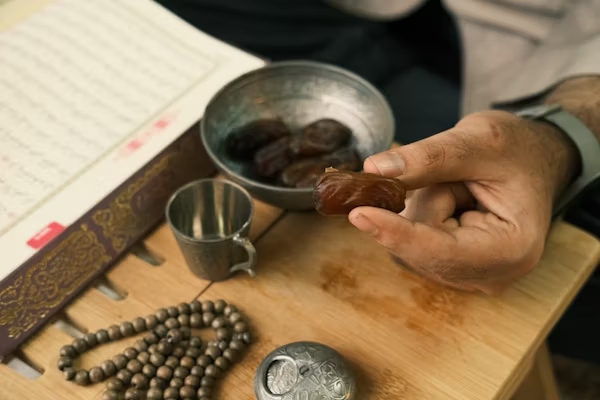Across human history, spices have served as more than just flavor enhancers—they have been symbols of trade, medicine, culture, and identity. Among the most storied is coriander, known in many parts of the world by its ancient and regional names. One particularly intriguing form is “Koriandri”, a term that echoes across languages and histories, hinting at both the spice’s deep past and its growing presence in modern cuisine and wellness practices.
This article traces the ancient roots and modern revival of Koriandri, exploring how this timeless spice has traveled across civilizations, shaped culinary traditions, and re-emerged as a celebrated ingredient in today’s global kitchens and holistic health movements.
The Origins of Koriandri
The word “Koriandri” is closely tied to the Greek koriannon (κορίαννον), which is believed to be one of the earliest recorded names for coriander. From the Mediterranean basin, the term evolved as coriander spread eastward and westward through trade routes.
Archaeological evidence shows coriander seeds were used as early as 5,000 BCE in the Fertile Crescent, making it one of humanity’s oldest cultivated spices. Ancient Egyptians placed coriander seeds in tombs as symbols of eternal love and health, while early Indian Ayurvedic texts praised the spice for its cooling and digestive properties.
Koriandri in Ancient Cultures
Throughout history, Koriandri (coriander) played a multifaceted role:
-
In Greece and Rome → It was used both as a culinary herb and in perfumes, highlighting its dual role as flavor and fragrance.
-
In India → Known as dhania, coriander became a staple in curries, spice blends, and traditional remedies.
-
In China → It was incorporated into medicinal practices for its believed ability to balance the body’s energy.
-
In the Middle Ages (Europe) → Koriandri was thought to have aphrodisiac properties and appeared in love potions.
This widespread adoption underscores how Koriandri transcended food, becoming a cultural and symbolic marker across civilizations.
Linguistic Journey of “Koriandri”
The spice’s name evolved as it traveled across regions:
-
Greek: koriannon
-
Latin: coriandrum
-
Old French: coriandre
-
English: coriander
-
Hindi: dhania
-
Spanish: cilantro (when referring to the leaves)
The term Koriandri, though less common today, reflects the linguistic echoes of its ancient heritage—linking the spice to its classical beginnings while distinguishing it from its modern variants.
Culinary Legacy of Koriandri
In kitchens around the world, Koriandri holds a unique place because both its leaves and seeds are used differently:
-
Leaves (Cilantro) → Fresh, citrusy, and widely used in Latin American, South Asian, and Middle Eastern cuisines.
-
Seeds (Coriander Seeds) → Warm, nutty, and often ground into spice blends like garam masala, ras el hanout, and curry powder.
This duality—leaf and seed, fresh and dried—gives Koriandri unmatched versatility. Its flavors can brighten a salsa, deepen a curry, or add subtle complexity to bread and pastries.
Koriandri in Traditional Medicine
Beyond flavor, Koriandri has long been valued for its healing properties:
-
Digestive Aid → Used to reduce bloating, improve appetite, and calm the stomach.
-
Anti-Inflammatory → Recognized in both Ayurvedic and Chinese medicine for soothing inflammation.
-
Detoxifying Effects → Some modern studies suggest coriander may assist in detoxifying heavy metals from the body.
-
Sleep and Anxiety Relief → Historically used in teas and remedies to promote relaxation.
This enduring medical role shows how Koriandri bridged the worlds of food and healing—a dual function still relevant today.
The Modern Revival of Koriandri
In recent years, Koriandri has experienced a revival thanks to trends in global cuisine, wellness, and natural living:
-
Culinary Renaissance → Fusion cuisine has elevated coriander seeds and cilantro leaves in everything from artisanal cocktails to Michelin-starred dishes.
-
Health & Wellness → Modern nutritionists highlight its antioxidant, antibacterial, and cholesterol-lowering properties.
-
Sustainable Agriculture → Koriandri thrives in diverse climates, making it a sustainable choice for small farmers worldwide.
This revival demonstrates how an ancient spice can remain relevant in contemporary contexts—bridging tradition and modernity.
Cultural Controversies: The Cilantro Divide
Interestingly, Koriandri has also sparked polarizing reactions in modern culture. For some, cilantro (the fresh leaves) tastes vibrant and refreshing; for others, due to a genetic variation, it tastes like soap. This cultural and biological divide has made Koriandri a fascinating topic not just in gastronomy but also in genetics and food psychology.
Koriandri as a Symbol of Timelessness
From ancient tombs to today’s gourmet kitchens, Koriandri embodies continuity across time. It is a spice that has witnessed the rise and fall of empires, traveled along the Silk Road, and adapted to countless cultural contexts. Today, it continues to symbolize:
-
Connection between East and West.
-
Adaptability in both food and medicine.
-
Heritage linking modern eaters with ancient traditions.
Conclusion
“Koriandri” is more than just another name for coriander—it is a linguistic echo of history, a cultural symbol of adaptability, and a modern emblem of culinary and holistic revival. From its ancient roots in Egyptian tombs and Greek kitchens to its global role in curries, salsas, and health remedies, Koriandri proves itself a timeless spice that continues to shape human culture.

